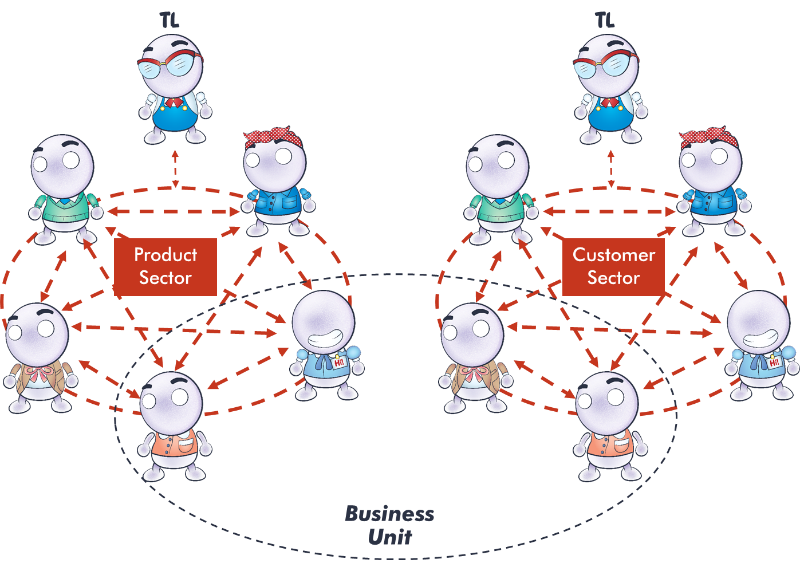Matrix Management Wiki
Home » The Organizational Lever (SPA) » 5F. Business Units
- 5F1. Business units, also known as BUs or strategic business units, were created as part of the MM 1.0 hybrid system in order to focus on a product, customer, or market group.
- 5F2. Because MM 1.0 uses the same premises as VM 1.0, this created a myriad of problems when using BUs:
- 5F2i. Because MM 1.0 still requires authority in order to lead, and because BUs are accountable for the portion of the business they are charged with running, business units sought to gain control over as many of the resources that affected their business as possible.
- 5F2ii. Placing decentralized functions into BUs created inefficiencies in larger business processes (like the supply chain or HR or IT). As these groups were then centralized, the BU lost “control” over those parts of the business while at the same time retaining accountability for overall business performance.
- 5F3. In MM 2.0, business units can be used to manage business segments.
- 5F3i. Business units aren’t typically needed in MM 2.0 because the sectors are already running the business. However, when a business gets too large to manage effectively using sectors, the business can first be divided up into BUs with sectors within each BU.
- 5F3ii. A BU is assembled from segments within each of the sectors that fit together as a separate business unit.
- 5F3iia. For example, certain customer segments and certain product segments can be managed collectively as a whole business.
- 5F3iib. Figure 5.2. Segmenting off a business unit.

- 5F3iii. To create a business unit in MM 2.0, gather together the relevant segments and create a Steering Council to oversee them.
- 5F3iv. A BU is a way of creating a subset of the main business which can be managed relatively independently of other BUs.
- 5F3iva. This usually entails structuring around a certain customer and/or product group.
- 5F3ivb. Shared sectors can include the business process/project operating and support sector, the supplier/supplies sectors, and broad-spectrum support sector.
- 5F3ivc. All BUs will share the vector segment, as vectors serve the broader organization.
- 5F3ivd. Priorities can be set within BUs, except for shared sectors and vectors, which require a steering council populated by BU leads.
- 5F3v. When applying the principles and rules of MM 2.0 productivity and accountability, the business unit is able to steer all parts of its business in the horizontal dimension.
- 5F3vi. A cross-BU Steering Council sits above BU sectors and includes other shared sectors and each BU.
- 5F3via. The cross-BU Steering Council has team accountability for the performance of the broader business.
- 5F3vib. Individual BU leaders have individual accountability for the performance of their BUs, and also have team or organizational accountability for cross-BU performance, which takes precedence over their individual accountability.
- 5F3vii. Business units are recommended for use in larger organizations, especially if they have very large portfolios of customers and/or products/services.
- 5F3viia. The number of interfaces that need to be managed and the size of the portfolios necessitates breaking the larger system down into subsystems.
- 5F3viib. This additional breakdown is necessary to make them manageable.
- 5F3viic. In smaller organizations, creating the customer and product/service sectors allows the business to align around external customers, and therefore doesn’t require the added structure of a BU.
- 5F3viii. Any sector Steering Council that sits outside the business unit and yet serves the BU should be interlocked with one or more of the BU Steering Councils.
- 5F3ix. Conflicts between sectors and business units can be mitigated with the P Key (setting clear priorities across the entire organization) as well as the A Key (aligning and clarifying each leader’s individual, team, and organizational accountability for those priorities).

